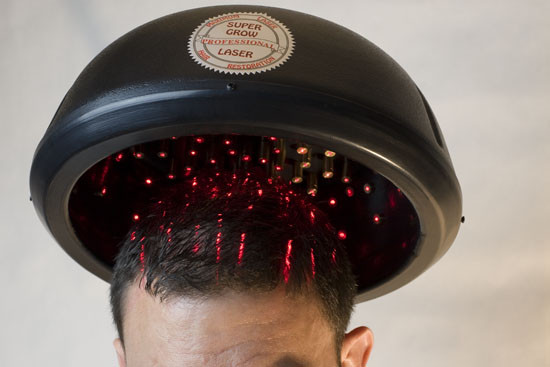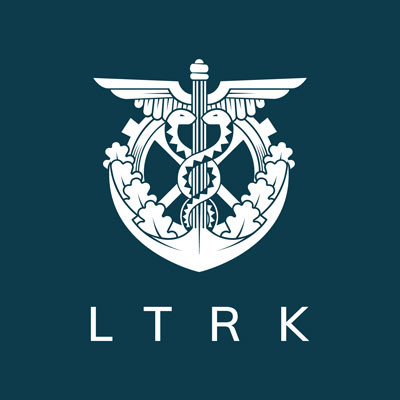According to some data, up to 80% of men suffer from hair loss. Moreover, the first signs of alopecia (balding) can appear as early as 25 years old. Why does this happen and how to solve the problem — we will explain in this article.
Before panicking, it's important to know that hair loss is a completely natural phenomenon. Both men and women constantly lose hair, as hair is renewed every 3–5 years. But how to know if in your case hair loss is normal or already a deviation?
If you are losing an average of 50–150 hairs per day, there is no reason to worry. How to determine if it’s time to visit a trichologist? Here’s one option: don’t wash your hair for three days, then gently pull the hair on your temples and crown. If more than 5 hairs fall out, it’s worth seeing a doctor.
Why do young men lose hair? Traditionally, baldness is associated with the approaching age. However, 6 out of 10 men start balding by the age of 25. Clearly, it’s too early to talk about age, and the causes of hair loss lie elsewhere.
The first reason is genetics. It’s genetically determined that a man inherits androgen-dependent follicle types — that is, very sensitive to testosterone. As a result, a man is "doomed" to baldness from birth, but the tendency for hair loss only manifests when testosterone transforms into dihydrotestosterone. This disrupts protein synthesis and leads to hair follicle dystrophy. These "dependent" follicles are usually located in the frontal and parietal areas. These zones eventually end up hairless. This type of balding is called androgen-dependent or hereditary. The intensity of balding is individual. If the sensitivity of follicles to hormones is high, a man can become completely bald in just five years. If it is low, the balding process stretches throughout life.
The second reason is various diseases. For example, autoimmune disorders, syphilis, dermatophytosis, trichophytosis, tuberculosis, anemia, diabetes, thyroid disorders, and others. All of these lead to focal hair loss, when bald patches appear on a man's scalp or even on the eyebrows and beard. This type of alopecia is called symptomatic. It can also occur after trauma or due to improper nutrition. By the way, stress can also cause this type of balding, as it sometimes leads to hormonal disorders and disruptions in the body.
The feature of this type of alopecia is that it can be stopped if the source of the problem is eliminated. Among men, seborrheic alopecia is also common — this type of balding is related to an unhealthy scalp condition. There is a disruption in the functioning of sebaceous glands and increased sebum production. However, it is believed that seborrhea alone cannot be the cause of hair loss.
The third reason is the influence of toxic factors. This could be working in harmful industries, radiation, or taking medication (especially uncontrolled use). Again, hair loss can be stopped if the factor is eliminated.
Hair Loss Treatment Methods
One of the simplest treatment methods is physiotherapy. For example, ozone therapy (ozone exposure) has a positive effect on the scalp, saturates cells with oxygen, improves blood circulation, and removes toxins and harmful substances. Additionally, ozone therapy reduces inflammation, swelling, and kills fungi and bacteria. All of this enhances hair growth.
Ozone therapy can be performed:
- intravenously;
- with injections in the problem area;
- by treating the area with a special solution. Injections are not very pleasant, and the procedure takes about 20 minutes. At least 2 sessions (ideally 6) are needed to see results. Treatment of the area with a solution is considered less effective, but it is non-traumatic.
Another method — laser therapy — is also a non-surgical method, considered quite effective for hereditary baldness. It gives good results when used together with minoxidil. The hair regrowth is improved both cosmetically (hair density increases, condition improves) and physiologically (sleeping follicles are awakened).
Another popular procedure is mesotherapy, which involves injecting the scalp with solutions. This method is very effective and practically painless. It is suitable for cases where hair loss is caused by hormonal imbalances, poor nutrition, radiation, or seborrhea. A course typically involves 8–10 sessions, and the first results can only be assessed after completing all the procedures. To achieve better results, several sessions throughout the year may be necessary.
Recently, PRP therapy has also gained popularity, considered one of the safest and most effective treatments for hair loss.
It is performed as follows:
First, blood is taken from the client’s vein (volume — up to 50 ml).
Using special equipment, the blood is processed, and liquid plasma, or plasma filler, is obtained.
The plasma is then injected into the scalp.
The entire procedure lasts about an hour, and recovery takes up to three days. This method improves the function of sebaceous glands (which is especially important for seborrheic alopecia), activates dormant follicles, and stops the degeneration of hair follicles. Usually, up to 10 sessions are needed to achieve the desired result.
However, it’s important to understand that all the methods mentioned have certain limitations. Furthermore, not every type of alopecia can be treated with these procedures, even despite their effectiveness. Much depends on the man’s health, the stage of balding, and the type of alopecia.
What to do if balding cannot be stopped?
If the above methods don’t help, it’s time to seriously consider a hair transplant. There’s no need to be afraid of this procedure, as today there are very effective and safe non-surgical hair transplant methods that leave no scars and are painless. For example, the non-invasive FUE method. The essence of the method is simple: first, hair follicles are extracted from a healthy donor area using micro-tools, then they are implanted in the recipient area. The procedure involves no cuts or stitches. No scars or swelling remain after the transplant. You won’t experience any pain. At the same time, you will surely receive healthy, beautiful, and natural hair both in the transplant area (survival rate up to 100%) and in the donor area (up to 20% of extracted follicles regenerate).
This procedure is performed by the only hair transplant and skin rejuvenation clinic in the Baltic states, Rubenhair Baltics. For more detailed information, visit the website www.rubenhair.eu.







